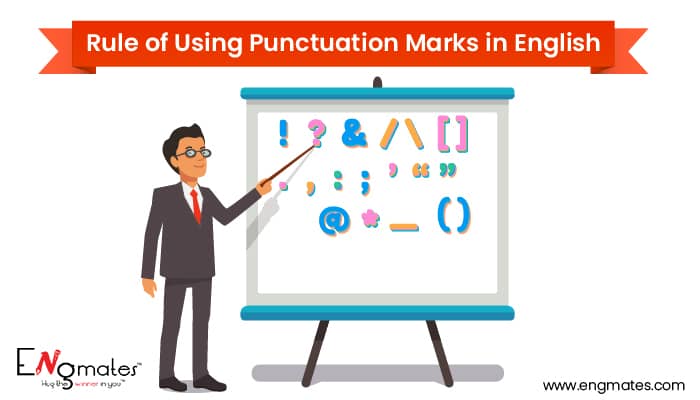
English is a complicated language, and one of the most difficult things to learn in English is punctuation marks. Nevertheless, punctuation rules are not something you should get hung upon.
Punctuation helps you better communicate your message through writing. Just like we pause, make gestures, and use intonations while speaking, punctuation marks help relay the same feeling in writing.
Here’s a brief look at the different types of punctuation marks and their uses:
Full Stop (.)
Also known as the period, the full stop marks the end of a sentence. It suggests a long pause.
The comma (,)
Commas are used for two purposes: to separate items in a list, to break up sentences with a short pause between phrases and clauses.
Question Mark (?)
The question mark is used to make the sentence interrogative.
Exclamation Mark (!)
They are used in sentences to show excitement, drama, surprise, anger, annoyance.
Colon (:)
Colons are used for two reasons. It can be used to introduce lists, quotations, or sometimes speech. Or it can be used to show that the second sentence in the clause is related to or explains the first.
Read More– Silent Letters – Usage & Rules in the English Language
Semicolon (;)
Semicolons are also used in two ways. It is used to separate items in a list, where each item is made up of several words. It is also used to show a pause in a sentence that is greater than the comma but lesser than a full stop. It is used where two clauses of equal importance are next to each other.
Apostrophe (‘)
There are two apostrophes, and they are both unrelated to each other. The possessive apostrophe shows belonging. The contraction apostrophe is used to show when letters are missed out.
Speech Marks (“)
Speech marks are used to show sentences, clauses, or phrases that are directly said or directly quoted. Speech marks can be single and double.
Parentheses ( () _ ‘ ‘ )
There are three kinds of parentheses: brackets, commas, and dashes. These are used to deliver extra information in a sentence.
Ellipses (…)
Ellipses are used for two reasons. It is usually used to signify a cliffhanger at the end of a sentence. It is also used to show that words have been missed out of a quote or direct speech.
The hyphen (-)
Hyphens are used to create a noun made of two parts.
Now, let’s take a closer look at these punctuation marks and how you can use them in sentences:
Full stop, Question Mark, and Exclamation Mark
These three punctuation marks, along with ellipses, are sentence enders. A sentence could be anything as long as it is relaying a meaning. It can even be one word. For instance, I am glad they liked my project. Phew. Here ‘phew’ reflects relief.
Exclamation marks indicate surprise. A question mark would indicate that the audience is doubtful about the outcome.
Comma (,)
Commas are used to separate items in a list except for the last two, which are usually separated with the connective “and.” However, if the final item in the list is meant to be emphasized, then the oxford comma is used before the ‘and.’
Preferred Written English and English Speaking Course in Delhi
Colon(:)
Colon is used to introducing a quote or a speech. It is also used to separate two clauses for emphasis. The colon introduces a pause in the sentence, which, in turn, emphasizes the second half of the sentence.
Semicolon(;)
Semicolons are not used for emphasis as much as they are used for clarity. A semicolon signifies a pause shorter than the colon, which means when a sentence is separated by a semicolon, the second half of the sentence does not have any emphasis.
Apostrophe(‘)
Apostrophe’s only function is to tell the reader whether the subject of the clause is singular or plural.
Speech Marks (“)
Speech marks are used to signify directly quoted sentences. The single and double speech marks are used to reflect speech within the speech.
Parentheses ( () _ ‘ ‘ )
All three forms of parentheses are largely interchangeable. The brackets are used to add information, the dashes are used to add information in an emotive way, and the commas are used to surround a subordinate clause.
Read More –
Ellipses (…)
Three dots. Not one less. Not one more. Ellipses should be used as per the convenience of the reader and should not change the meaning of the sentence.
Read More- Check Your Vocabulary: Most Commonly Misused Words in the English Language
Hyphen(-)
A hyphen is used when two separate words are combined to make a noun. Nevertheless, hyphens are becoming obsolete as dictionaries show that words can be written with or without them without changing the meaning.
Conclusion
Punctuation is one of the most important aspects of English writing. It helps writers communicate their ideas more effectively and clearly. Once you understand the basic use of each of these punctuation marks, you will be able to include them in your writing.
